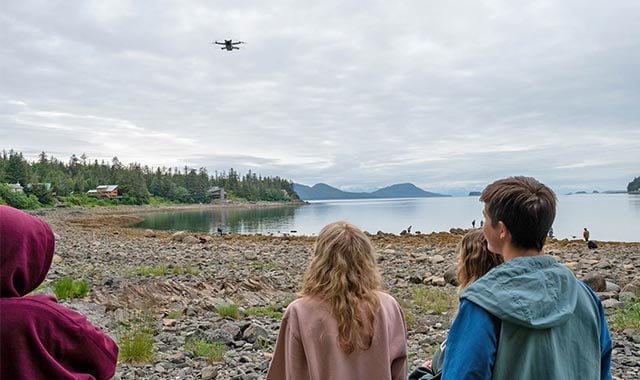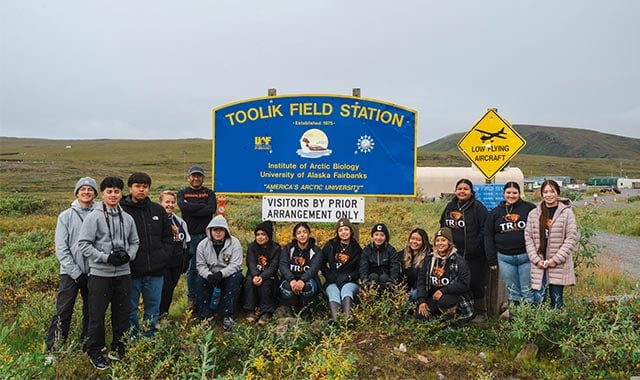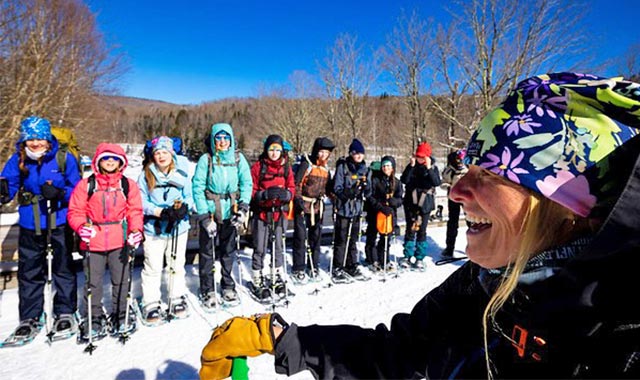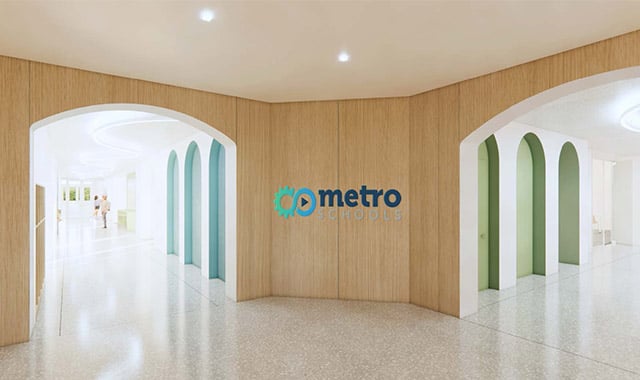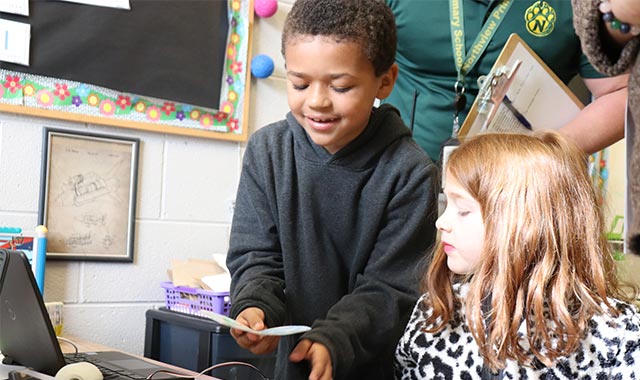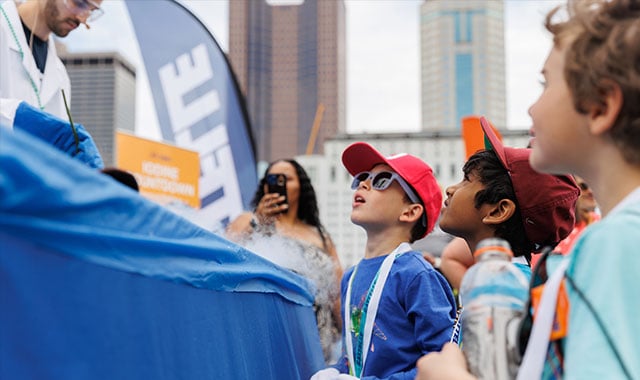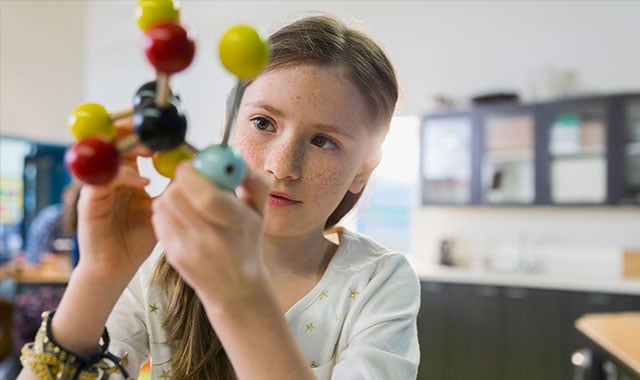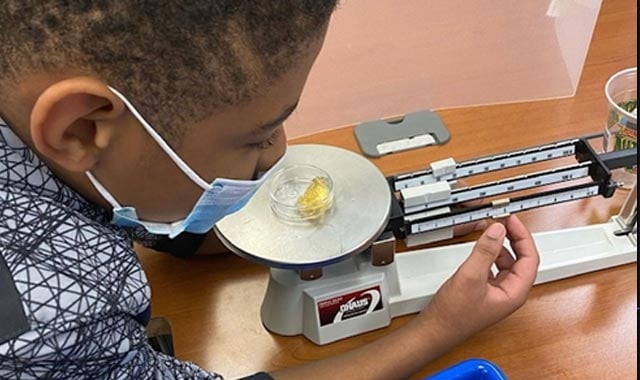Students at Sisters High School Take Science into the Stratosphere
-png.png?sfvrsn=b873fbfa_0)
Students at Sisters High School in Sisters, Oregon, are taking learning to new heights through an innovative STEM (science, technology, engineering and math) program in stratospheric ballooning. Over the last five years, students in the RISE (Research in Sisters Environments) program have sent dozens of experiments into near space (about 30 km up) using stratospheric balloons.
Along the way, students are learning important lessons about how science experiments are designed, managed and implemented in the real world. A STEM grant from Battelle will enable the school to continue to build the program and open up new opportunities for students.
Student-led Science at the Edge of Space
The RISE ballooning program came about through a partnership between Sisters High School and Steven Peterzen, one of the world’s leading experts in stratospheric ballooning and the founder of International Science Technology and Research (ISTAR). ISTAR supports stratospheric “near space” research programs for organizations all over the world, including NASA, the Italian Space Agency, Andoya Space Center and various universities. Steven approached Sisters, the local high school where he lives, in 2015 with a proposal for developing a stratospheric ballooning program for their students. He quickly found a partner in chemistry teacher Rima Givot. All students at Sisters have the opportunity to participate in the program as part of their chemistry class.
Learn more about research infrastructure and lab operations and management at Battelle.
Over the past few years, students have sent all kinds of materials into near space using stratospheric balloons, from duct tape to radish seeds. One study examined how exposure to near-space conditions impacts the growth rate of E. coli bacteria. Another looked at the insulation properties of commercially available down jackets vs. NASA spacesuits. All of the projects are designed, led and implemented by the students with guidance by Steven, Rima and other mentors.
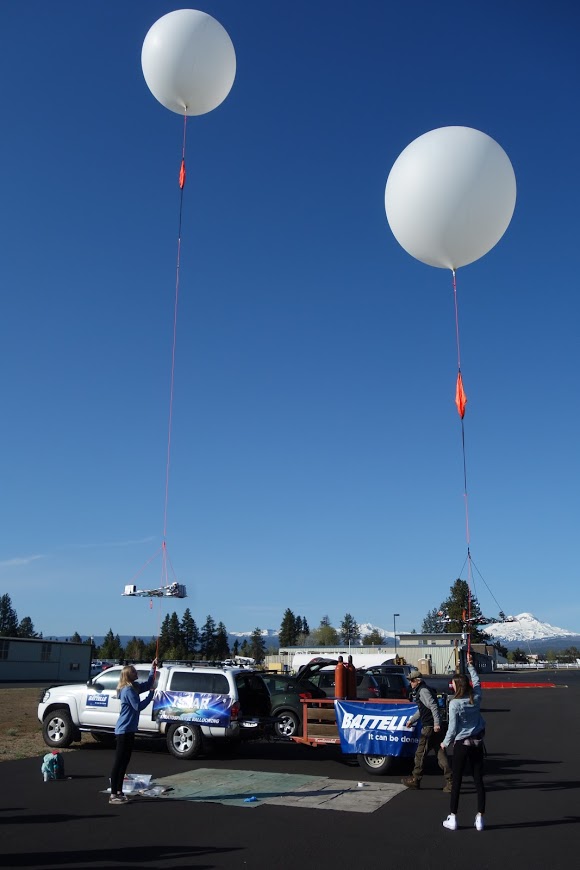
Sisters High School students ready to launch their balloons.
Sydney Wilkins, a sophomore in Rima’s chemistry class, says, “This feels more real than a normal high school science experiment. It’s entirely done by the students and for the students. It’s really interesting to see the kinds of ideas people come up with. Kids get really interested and invested in it.”
The Science of Stratospheric Ballooning
Steven’s passion for stratospheric ballooning goes back to the early 1990s, when his work with the University of Alaska – Fairbanks in Greenland (extracting ice cores for atmospheric studies) led to an opportunity to participate in a stratospheric balloon campaign for Harvard University and NASA. He has been ballooning ever since. He says, “Balloons are a magical event. Watching a balloon climb to altitude excites the little kid inside of you. And balloons are a cheap seat to space!”
The large stratospheric balloons that Steven works with at ISTAR can climb up to 150,000 feet (45 km). They provide access to near space at a fraction of the cost of a rocket launch, opening up new opportunities for stratospheric research. The balloons can carry a payload of cameras, sensors and other equipment to study atmospheric conditions in the stratosphere, get an unobstructed view of space from above the atmosphere, and peer down at the earth from above. They are also used to carry materials, equipment or even living organisms (such as seeds, plants, bacteria, yeasts and fungi) into near space to see how they respond to stratospheric conditions, including low temperatures and pressures, intense UV radiation and low levels of oxygen and other atmospheric gases.
The balloons that students work with at Sisters High School are much smaller and carry a lighter payload than the ones used by NASA and other space organizations. Because the students’ balloons are not vented, they can only rise about 100,000 feet (30 km) into the stratosphere before gas expansion (due to lower pressures in the stratosphere) causes them to burst. Once that happens, the payload descends, and a parachute deploys to bring it gently back to earth.
Student-developed video showing their balloon launch project.
Students use the balloons to see the Gas Laws they study in chemistry class in action in the real world. They also study meteorology to predict how the balloons will behave and where the payload is likely to land. The experiments that they conduct have covered a broad range of scientific and technical disciplines, including materials science, biology, meteorology and chemistry. Steven says, “This is truly a multidisciplinary project. You’ve got all aspects of STEM here—science in designing the experiments, technology and engineering in designing the payloads and instrument systems, and lots of math in calculating trajectories and analyzing results. It’s pretty amazing.”
Real-World Lessons in Scientific Discovery
Perhaps the most valuable lesson students carry away with them is that a scientific experiment isn’t just about the science. The balloon launches require a tremendous amount of project management, coordination and collaboration to ensure a successful outcome.
Usually, students manage every aspect of the program, including designing and selecting the projects, engineering the payload, monitoring weather conditions and calculating the trajectory of the balloon, and managing the launch and recovery operations. Students in Rima’s classes are divided into teams for experimental design (mentored by community member Rod Moorehead), payload construction, weather (guided by retired meteorologist Ron Thorkildson), and logistics, which includes project management and payload recovery. The teams must coordinate closely with each other and with community partners such as the Sisters Eagle Airport, which provides space for the launch as well as other resources for the program. In 2020, due to social distancing requirements related to COVID-19, Steven and Rima had to take on more of the management, logistics and recovery roles.
The project gives students a glimpse into how science is conducted in the real world by organizations such as Battelle. Rima says, “They get to be part of a team focusing on a particular aspect of the project and see how they all fill different roles to make the project come together. And they are designing their own experiments based on their interests and seeing their vision become a reality. It’s a very profound experience that they will remember for a long time.”
Steven’s connections have given the students opportunities to work with scientists from all over the world, such as Silvia Masi, University of Rome La Sapienza, and Pierre DeDieu, retired from CNES (French Space Agency). Steven hopes that these connections will not only help students with their high school experiments but also help them envision future career opportunities. “We try to open things up for the inquisitive student,” he says. “I tell them to hold close to these connections for the future.”
Sydney, who is interested in journalism, is building a website for the Sisters High School Balloon project that presents all of the experiments conducted over the last few years. She says, “It is so cool to be able to work with Steven and to talk to Silvia Masi and others because they are so passionate in what they do. It’s been fun to experience so much in high school and I’m really grateful to be in an environment where that is possible.”
Ballooning with Battelle
The partnership with Steven and Sisters High School is a natural one for Battelle. STEM education is part of our mission and mandate. Battelle has long been involved in K-12 STEM education, STEM workforce development and community outreach. Battelle Education, a nonprofit arm of Battelle, has been involved in many K-12 STEM projects and programs, including Metro Early College High School in Columbus, OH; STEM-focused teacher training programs; and numerous grant programs across the country. The Battelle STEM Grant Program provides funding to start or sustain innovative STEM education programs at schools and community centers.
The Sisters program was also of interest to Battelle because it intersects with many of the scientific areas Battelle is engaged in and demonstrates the effort and coordination required to enable safe, effective, complex science. Battelle has a 90-year history of unmatched scientific expertise across disciplines and reaching to the ends of the earth, from the Arctic to the Antarctic and from the deep seas to the stratosphere. Our research infrastructure management experience spans decades of national lab management, effective operation of the National Science Foundation National Ecological Observatory Network and world-class chemical demilitarization technology and operations management. Battelle works with ISTAR on projects that take advantage of the inherent benefits of ballooning to test prototypes for a variety of government-funded programs, including new suborbital telemetry systems.
The Battelle funding will help Steven and Rima sustain the program for coming years. Previously, ISTAR provided funding, equipment and supplies for the program and was reimbursed annually through donations made by the local community and Sisters Science Club. With this grant, they will be able to purchase equipment and supplies, which could include additional instruments and equipment to support more elaborate experiments. In the future (once COVID-related travel restrictions are lifted), they hope to be able to take some students on international trips to see large-scale stratospheric programs in action and participate in launch and recovery efforts in Greenland or other locations. Rima says, “Getting the grant from Battelle is like a stamp of approval for our program. We put so much work into this, and having this funding provides some validation for those efforts. Having this support will ensure that the program will be sustained into the future for our students.”
Steven is eager to see even more collaboration between Sisters High School and Battelle. “When you get the support of an organization like Battelle, it opens doors,” he says. “The opportunities on the other side of that doorway are huge. Battelle’s support will make so many things possible.”
Battelle researchers are enthusiastic about the relationship, too. “We believe that quality STEM education is the best way for children to develop the knowledge and skills they need to succeed,” said Regina Schofield, Director of Corporate Engagement & Education Outreach for Battelle Education. “An innovative program like RISE at Sisters High School is an amazing example of not only creatively incorporating science, technology, engineering and math, but also the logistical planning required to make an experiment work. This is exactly the type of work we are committed to supporting.”
Related Blogs
BATTELLE UPDATES
Receive updates from Battelle for an all-access pass to the incredible work of Battelle researchers.
